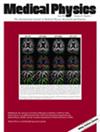Implicit neural representation-based method for metal-induced beam hardening artifact reduction in X-ray CT imaging
Abstract
Background
In X-ray computed tomography (CT), metal-induced beam hardening artifacts arise from the complex interactions between polychromatic X-ray beams and metallic objects, leading to degraded image quality and impeding accurate diagnosis. A previously proposed metal-induced beam hardening correction (MBHC) method provides a theoretical framework for addressing nonlinear artifacts through mathematical analysis, with its effectiveness demonstrated by numerical simulations and phantom experiments. However, in practical applications, this method relies on precise segmentation of highly attenuating materials and parameter estimations, which limit its ability to fully correct artifacts caused by the intricate interactions between metals and other dense materials, such as bone or teeth.
Purpose
This study aims to develop a parameter-free MBHC method that eliminates the need for accurate segmentation and parameter estimations, thereby addressing the limitations of the original MBHC approach.
Methods
The proposed method employs implicit neural representations (INR) to generate two tomographic images: one representing the monochromatic attenuation distribution at a specific energy level, and another capturing the nonlinear beam hardening effects caused by the polychromatic nature of X-ray beams. A loss function drives the generation of these images, where the predicted projection data is nonlinearly modeled by the combination of the two images. This approach eliminates the need for geometric and parameter estimation of metals, providing a more generalized solution.
Results
Numerical and phantom experiments demonstrates that the proposed method effectively reduces beam hardening artifacts caused by interactions between highly attenuating materials such as metals, bone, and teeth. Additionally, the proposed INR-based method demonstrates potential in addressing challenges related to data insufficiencies, such as photon starvation and truncated fields of view in CT imaging.
Conclusions
The proposed generalized MBHC method provides high-quality image reconstructions without requiring parameter estimations and segmentations, offering a robust solution for reducing metal-induced beam hardening artifacts in CT imaging.

 求助内容:
求助内容: 应助结果提醒方式:
应助结果提醒方式:


